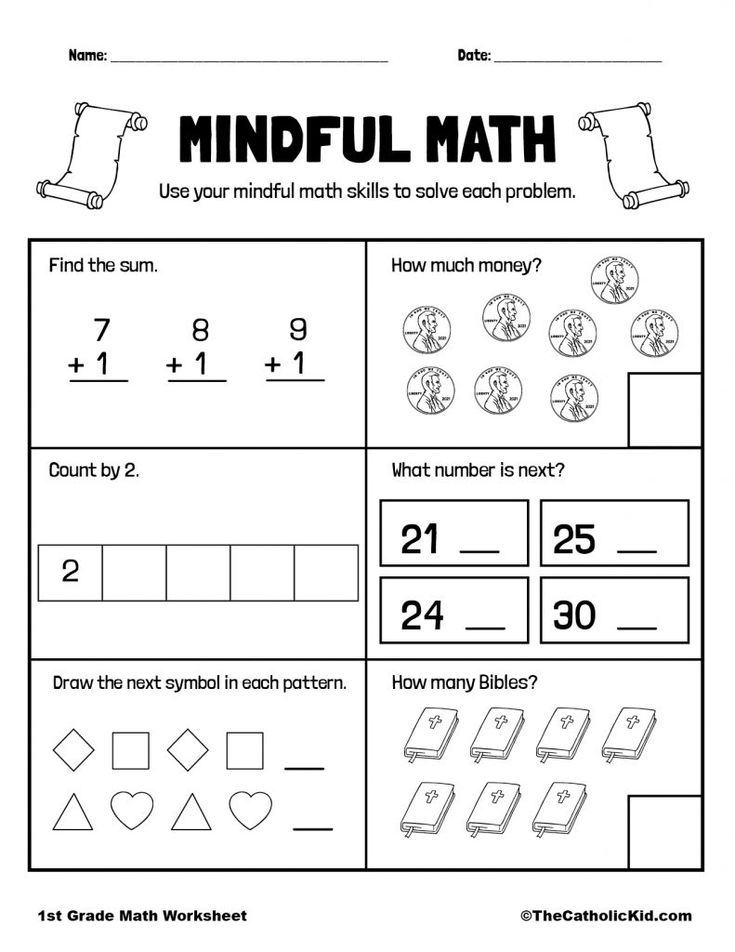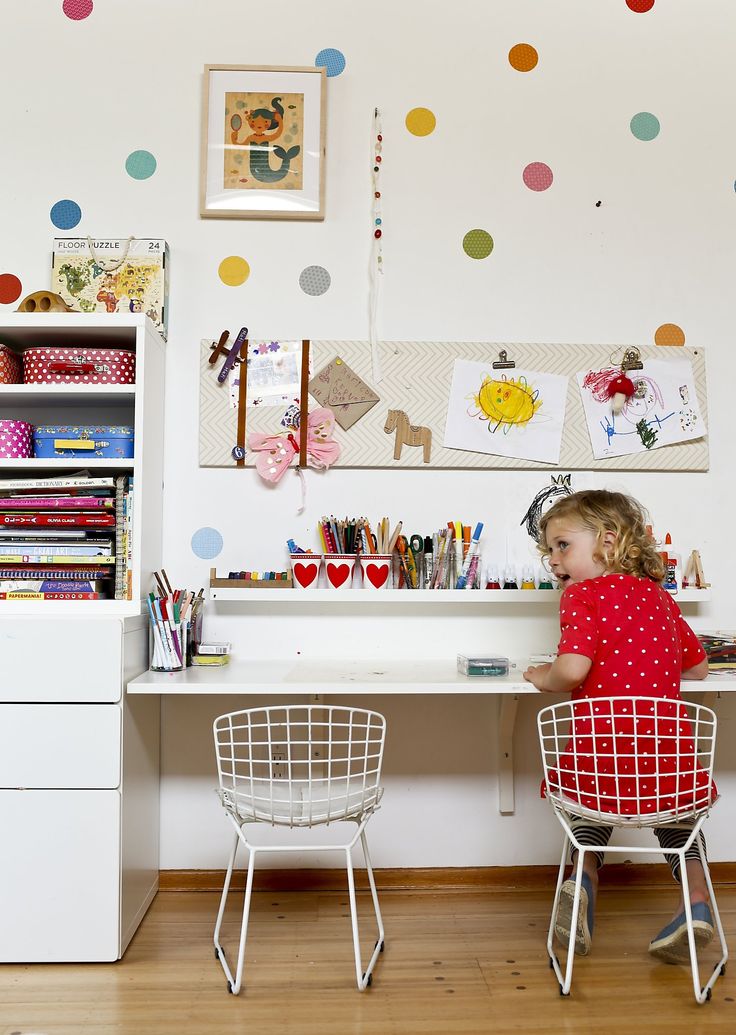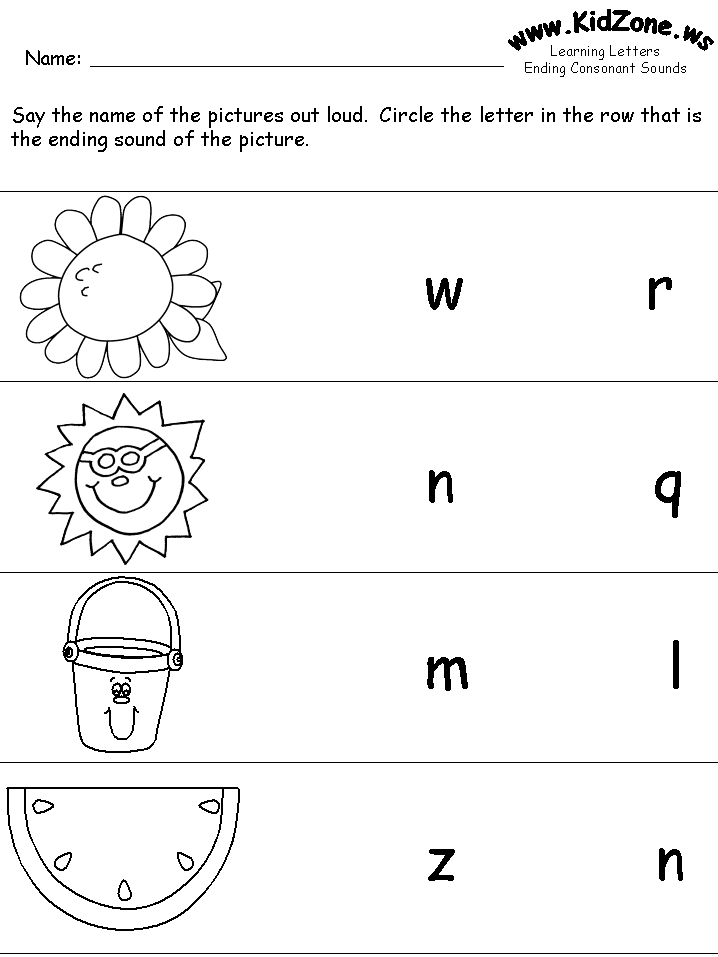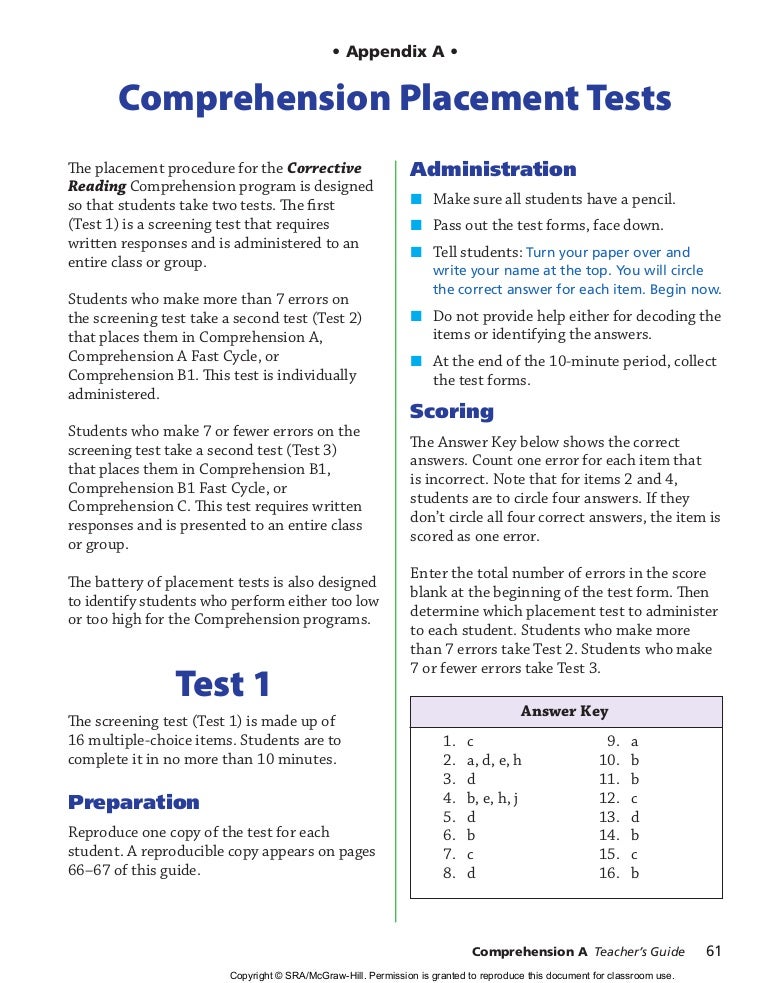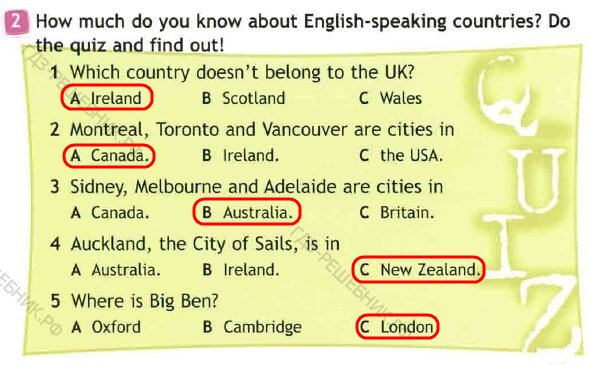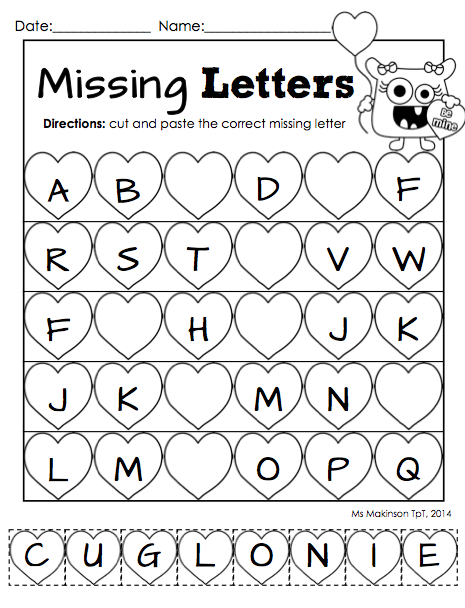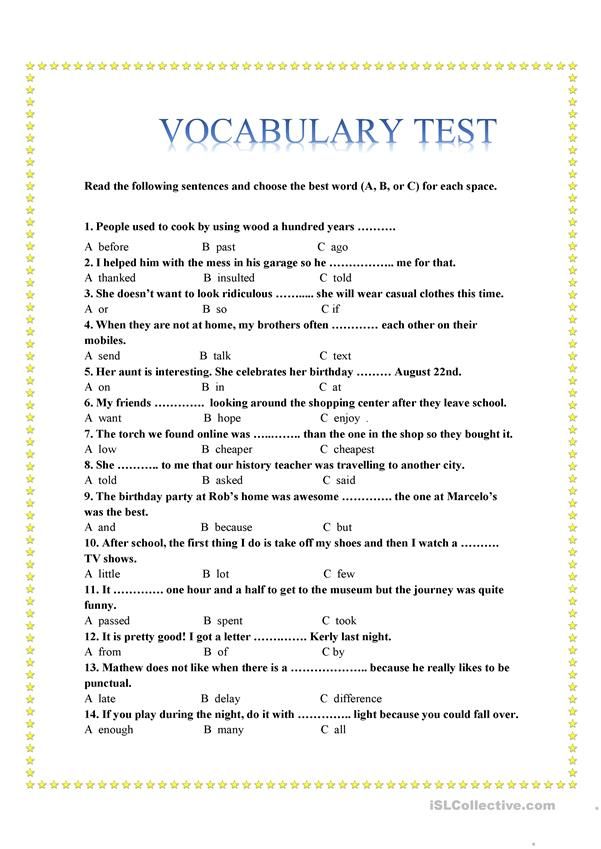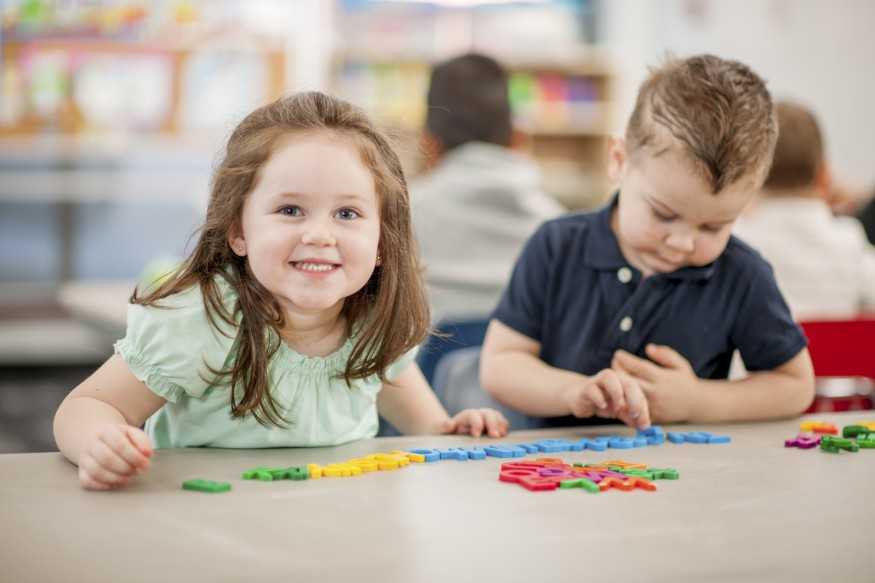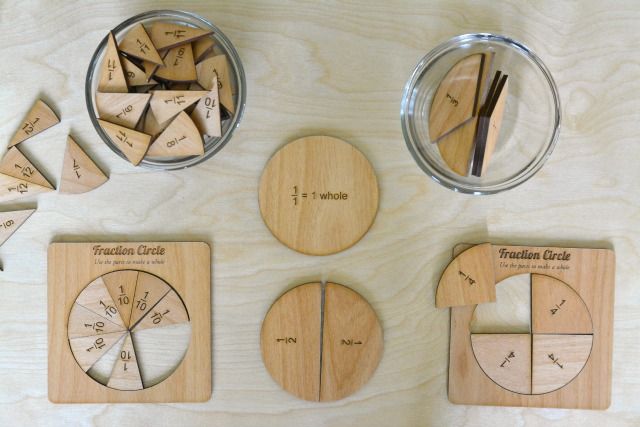Math skills for first graders
First Grade Online Lesson Plans
View Our Lesson Demos!
A first grade math curriculum should teach students the fundamentals in a way that is not just effective, but also fun. In addition to giving students a solid foundation, first grade math fluency also arms students with the tools and confidence they need to learn more advanced concepts down the road.
If a child can’t keep up with a first grade math curriculum, not only will they fall behind and, in turn, lose confidence, but they’ll also lose interest in the subject. Additionally, the skills and concepts that students learn in first grade math aren’t just limited to use in their academic studies. First grade math fluency also helps students become better problem solvers and logical thinkers.
What Math Should a 1st Grader Know
Students will acquire tons of new math skills in first grade. This knowledge will serve as a foundation for what they will learn in second grade math and also expand on what they learned in kindergarten. As they go into first grade, students should be familiar with a number of concepts in order for them to be successful and learn more advanced topics and math strategies. These include, but are not limited to:
- Be able to count, identify and write numbers
- Perform one-digit addition and subtraction
- Have an understanding of quantity (more and less)
- Familiarity with patterns and shapes
- Knowledge of place value (ones, tens, etc.)
The ideal math curriculum for first grade should not only build on these skills and ensure mastery of new concepts, but also make learning fun by engaging and motivating students.
Math Objectives for 1st Grade
Once you’ve selected the ideal math curriculum, it is important to set some attainable goals. Below is a sample of what some of these math goals should be:
- Count to 100; county by 5s and 10s to 100; count by 2s to 40
- Represent numbers on a number line
- Add and subtract 2-digit numbers
- Write the date; tell time; read a calendar
- Count and create coin combinations; add and subtract money
- Identify, sort and classify 2-dimensional shapes
- Understanding the value of money
Towards the end of the year, if your child has already achieved most of their first grade math goals you can give them a head start for the next year by having them practice math facts. This will solidify what they learned in first grade and prepare them for their second grade math learning targets.
This will solidify what they learned in first grade and prepare them for their second grade math learning targets.
1st Grade Math Scope & Sequence
Chapter 1: “Number Sense”
Lesson 1: Read Numbers –
2 ActivitiesRead whole numbers up to 100. Use one-to-one correspondence to count objects up to 100.
Lesson 2: Compare Numbers –
2 ActivitiesCompare and order whole numbers up to 100 by understanding the concepts of greater than, less than, and equality.
Lesson 3: Ordinal Numbers –
2 ActivitiesMatch ordinal numbers with an ordered set of up to ten items. Identify first, second, and third by name.
Lesson 4: Count Numbers –
2 ActivitiesCount forward and backward by ones and count forward by tens from any number less than 100.
Lesson 5: Place Value –
2 ActivitiesIdentify the place value of a digit in whole numbers to 100.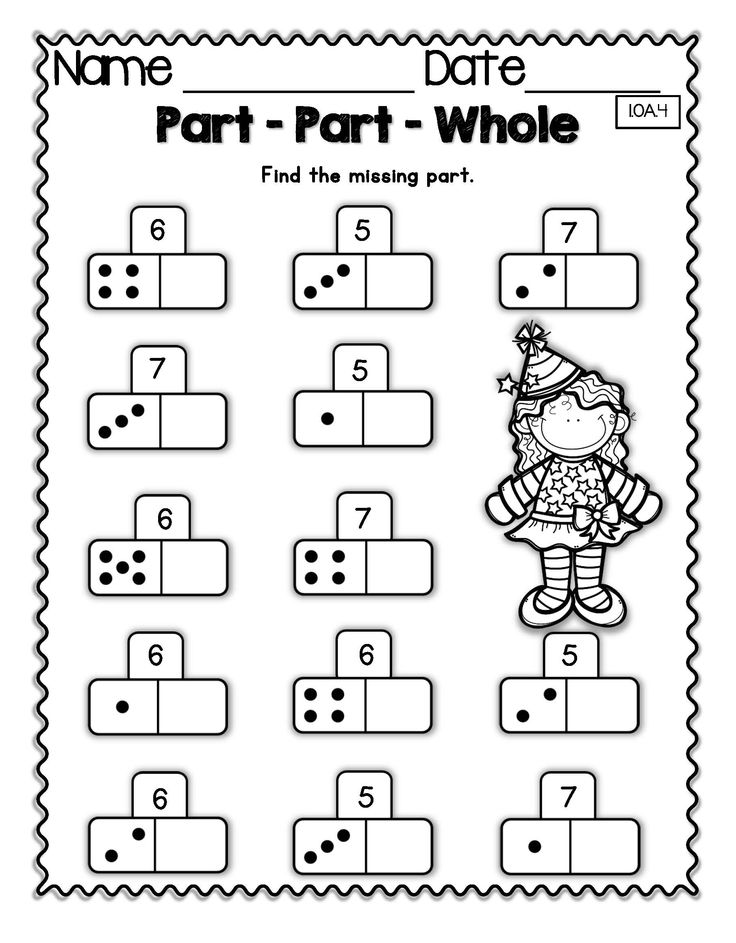 Identify the value of digits up to the hundreds place.
Identify the value of digits up to the hundreds place.
Lesson 6: Compare with Place Value –
2 ActivitiesGroup objects by tens and ones. Compare and order whole numbers up to 100 using place value.
Lesson 7: Count by Twos and Fives –
2 ActivitiesCount forward by twos and fives up to 50.
Lesson 8: Odd and Even Numbers –
2 ActivitiesModel and identify even and odd numbers.
Chapter Test: Number Sense
Chapter 2: “Fractions”
Lesson 1: Equal and Unequal Parts –
2 ActivitiesIdentify equal and unequal parts of wholes.
Lesson 2: Halves and Fourths –
2 ActivitiesIdentify and demonstrate fractions (1/2, 1/4) as parts of whole and parts of a set using concrete materials and drawings.
Lesson 3: Thirds –
2 ActivitiesIdentify and demonstrate thirds and 1/3 of wholes using concrete materials and objects.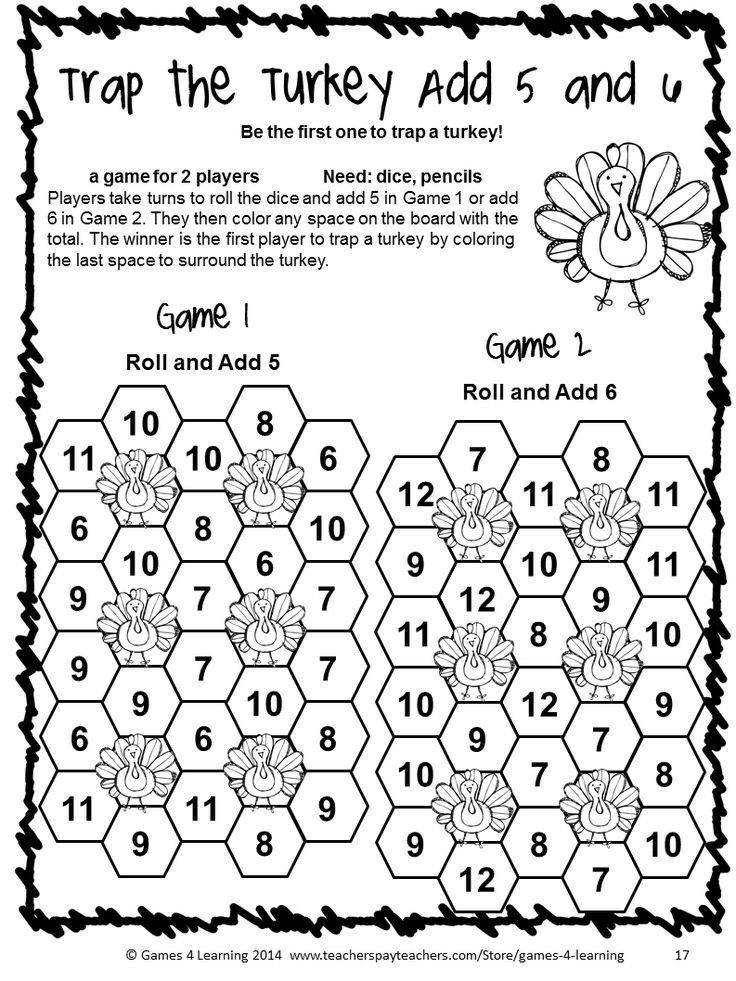
Lesson 4: Equal Fractions –
2 ActivitiesIdentify equivalent fractional parts as a whole.
Chapter Test: Fractions
Chapter 3: “Operations”
Lesson 1: Adding and Subtracting –
4 ActivitiesDemonstrate understanding of the meaning of addition and subtraction by using language such as put together, take away, increase, decrease, compare, and find the difference. Relate informal language to mathematical language and symbols.
Lesson 2: Place Value –
2 ActivitiesWhen given any number up to 100, identify one more than, one less than, 10 more than, and 10 less than.
Lesson 3: Equal Numbers –
2 ActivitiesUsing diagrams and/or numerical expressions, represent equivalent forms of the same number up to 12.
Lesson 4: One-digit Addition –
2 ActivitiesSolve one-digit addition problems.
Lesson 5: One-digit Subtraction –
2 ActivitiesSolve one-digit subtraction problems.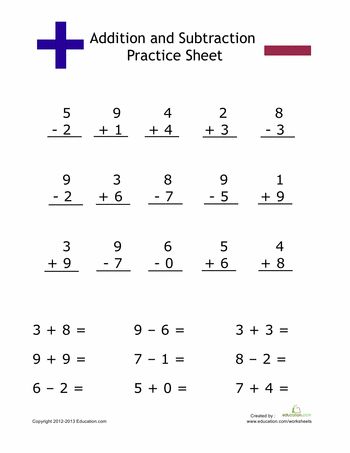
Lesson 6: Sum of Three Addends –
6 ActivitiesFind the sum of three one-digit numbers.
Lesson 7: Two-digit Addition –
6 ActivitiesSolve two-digit addition problems.
Lesson 8: Zero as a Placeholder –
2 ActivitiesExplain the meaning of zero and its function as a placeholder. Explore adding and subtracting zero.
Lesson 9: Addition and Subtraction Strategies –
7 ActivitiesSolve for basic addition and subtraction facts by using strategies such as counting on, counting back, doubling, doubling plus one, and making ten.
Lesson 10: One-Digit Word Problems –
2 ActivitiesSolve addition and subtraction one-digit word problems by selecting the proper operation.
Lesson 11: Problem Solving Strategies –
2 ActivitiesChoose an appropriate method, such as using concrete materials, mental math, or paper and pencil to solve real-world addition and subtraction problems.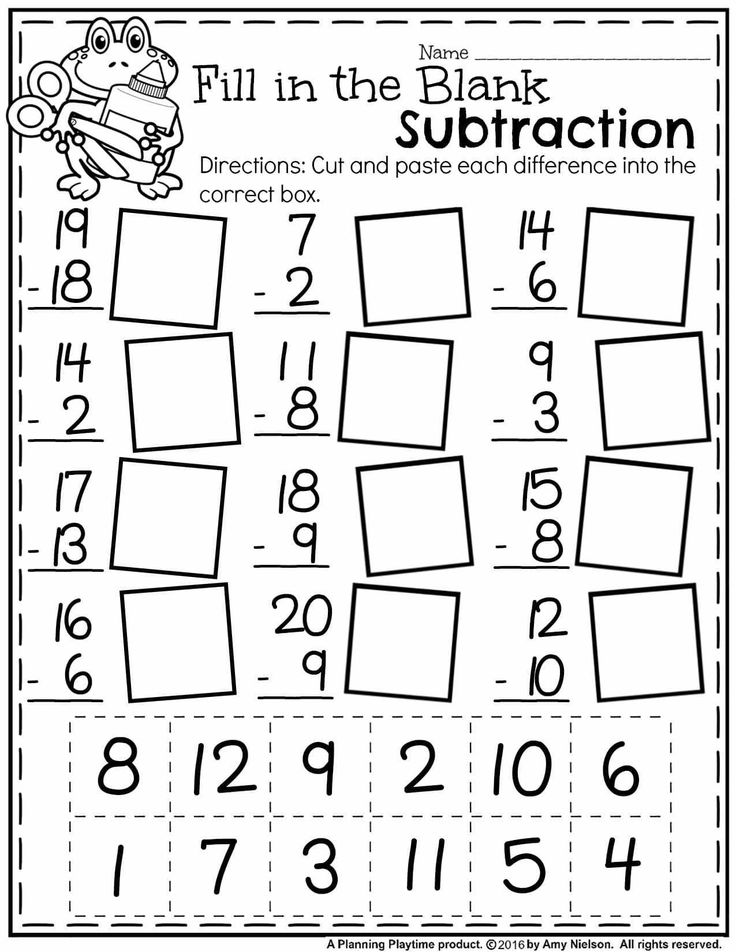
Lesson 12: Estimation Language –
2 ActivitiesUse the appropriate language of estimation such as about, near, closer to, and between to identify and describe numbers in real-world situations.
Lesson 13: Estimate –
3 ActivitiesEstimate reasonable answers to compare amounts, count objects, and solve basic facts.
Chapter Test: Operations
Chapter 4: “Money”
Lesson 1: Coin Values –
2 ActivitiesIdentify and name the values of coins (penny, nickel, dime) and show different combinations of coins that equal the same value, up to 75¢. Recognize and use the cents sign.
Lesson 2: Count Money –
2 ActivitiesIdentify and count money to equal an amount using the fewest coins.
Lesson 3: Model Money Amounts –
2 ActivitiesIdentify and count money to equal an amount using the fewest coins.
Lesson 4: Add and Subtract Money –
3 ActivitiesSolve simple addition and subtraction problems involving the use of pennies, nickels, and dimes up to 50¢.
Chapter Test: Money
Chapter 5: “Patterns”
Lesson 1: Sort Using One Attribute –
2 ActivitiesSort and classify objects by one attribute.
Lesson 2: Sort Using Two Attributes –
2 ActivitiesSort and classify objects by two or more attributes.
Lesson 3: Rules for Sorting –
2 ActivitiesJustify rules for sorting and classifying.
Lesson 4: Build Patterns –
2 ActivitiesUse one attribute to create a pattern. Identify errors in repeating patterns.
Lesson 5: Classify Patterns –
2 ActivitiesClassify, describe, and extend patterns of objects using a wide variety of attributes (i.e., size, shape, color).
Lesson 6: Picture and Number Patterns –
2 ActivitiesPredict and extend pictorial patterns. Identify and generate patterns in number pairs by adding to a T-chart.
Lesson 7: Repeating and Growing Patterns –
2 ActivitiesExplore and create repeating patterns and growing patterns and generate rule for such patterns.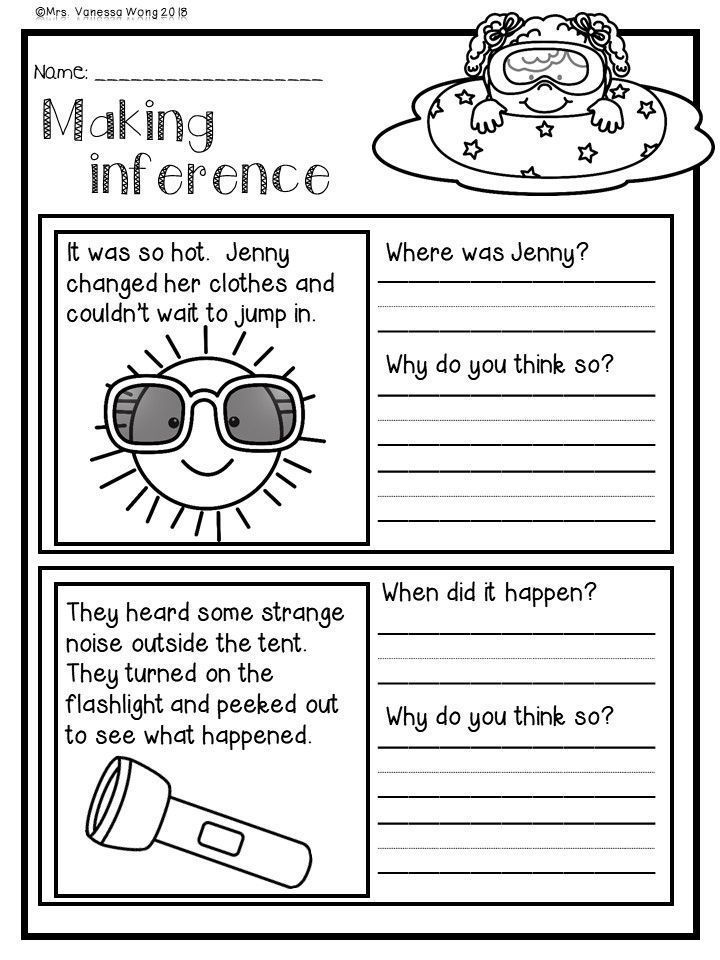
Lesson 8: Patterns on a Hundreds Chart –
2 ActivitiesExplore patterns of numbers on a hundreds chart.
Lesson 9: Skip Counting –
2 ActivitiesUse patterns to skip count by 2s, 5s, and 10s to 100. Understand and identify odd and even numbers.
Lesson 10: Extend Number Patterns –
2 ActivitiesPredict and extend existing numerical patterns using addition.
Chapter Test: Patterns
Chapter 6: “Algebra”
Lesson 1: Order Property –
2 ActivitiesUse the Commutative Property of Addition in solving problems.
Lesson 2: Add and Subtract Numbers –
2 ActivitiesUsing objects and pictures, model situations that involve the addition and subtraction of whole numbers.
Lesson 3: Fact Families –
2 ActivitiesIdentify fact families by understanding the patterns in related addition and subtraction sentences.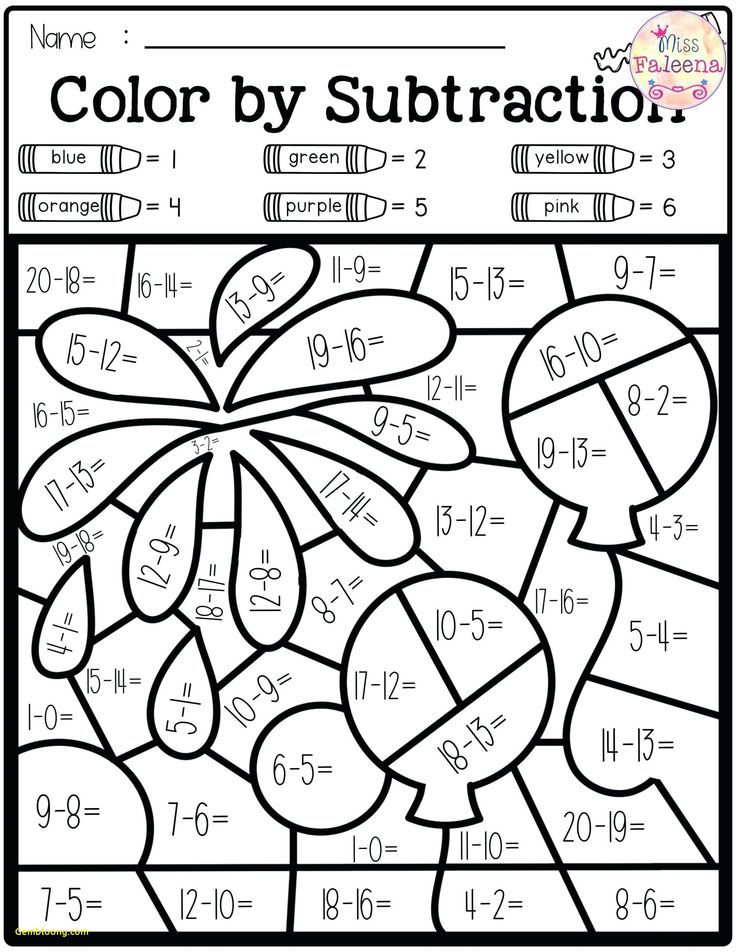
Lesson 4: Number Sentences –
2 ActivitiesUsing objects, create models that represent a variety of number sentences including the missing addend.
Lesson 5: Equal and Unequal –
2 ActivitiesUse concrete objects and pictorial representations to explore equalities and inequalities.
Lesson 6: Greater Than and Less Than –
2 ActivitiesUse concrete objects to solve number sentences with equalities and inequalities using the symbols <, =, >.
Lesson 7: Solve for Unknown Numbers –
3 ActivitiesSolve addition and subtraction problems with an unknown number represented by a geometric shape.
Chapter Test: Algebra
Chapter 7: “Shapes”
Lesson 1: Straight and Curved Lines –
2 ActivitiesCompare plane figures based on their straight and curved lines.
Lesson 2: Open and Closed Shapes –
2 ActivitiesIdentify open and closed figures.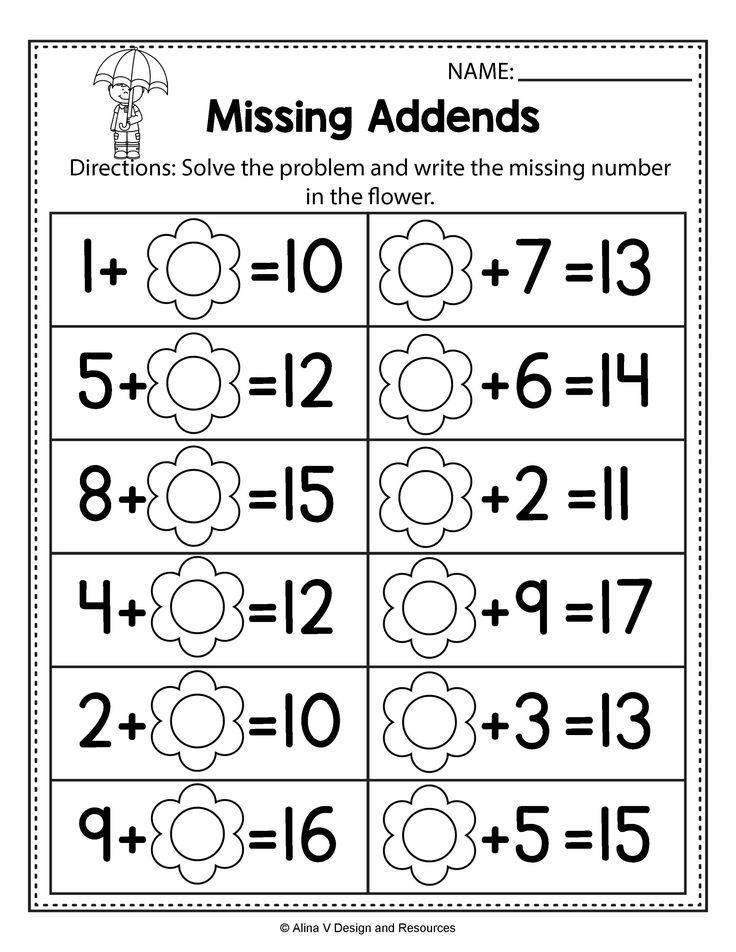
Lesson 3: Plane and Solid Shapes –
4 ActivitiesIdentify circles, triangles, and rectangles (including squares), and describe the shape of balls, boxes, cans, and cones. Sort shapes by attributes (sides, curves, corners).
Lesson 4: Special Plane Shapes –
2 ActivitiesRecognize plane shapes such as hexagons, trapezoids, and rhombi.
Lesson 5: Attributes of Plane Shapes –
2 ActivitiesDescribe and compare attributes (sides, vertices, angles) of two-dimensional shapes.
Lesson 6: Name Solid Shapes –
2 ActivitiesRecognize solid shapes such as spheres, cylinders, cones, and cubes.
Lesson 7: Attributes of Solid Shapes –
2 ActivitiesDescribe and compare attributes (edges, vertices, faces) of three-dimensional shapes.
Lesson 8: Congruent Shapes –
3 ActivitiesIdentify congruent two- and three-dimensional shapes.
Chapter Test: Shapes
Chapter 8: “Positions”
Lesson 1: Positions of Objects –
2 ActivitiesDescribe relative positions of objects or shapes using words such as top, middle, on, inside, and outside.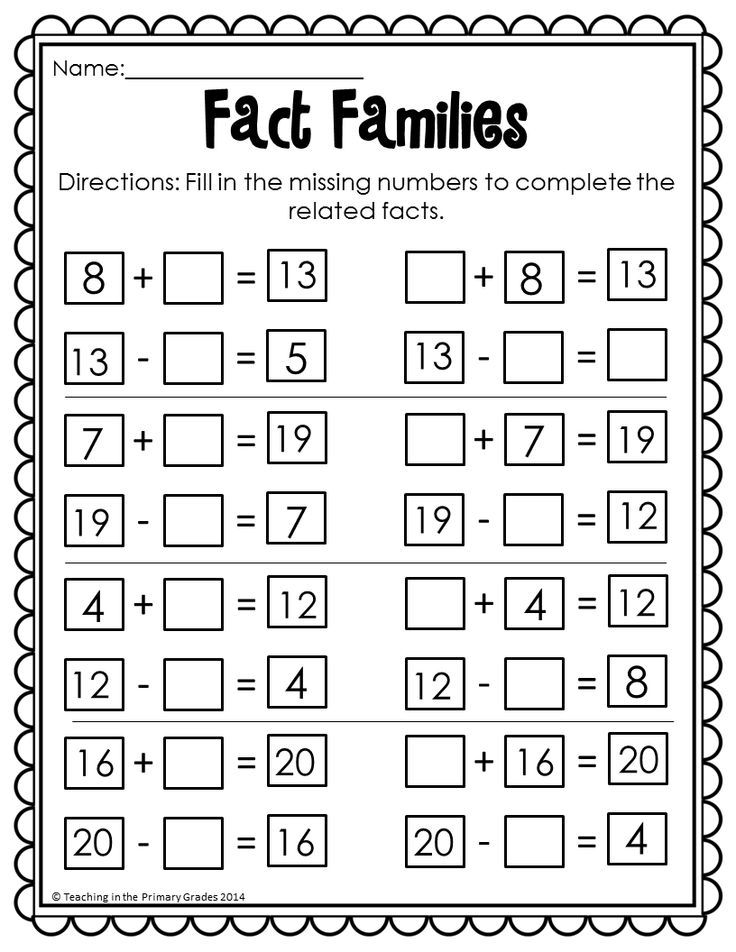
Lesson 2: Direction Words –
2 ActivitiesInterpret directional words such as left, right, up, and down.
Lesson 3: Position Words –
2 ActivitiesIdentify, locate, and move objects according to positional words such as to the left, above, and behind.
Lesson 4: The Number Line –
2 ActivitiesLocate, plot, and identify known and unknown numbers on a number line from 0 to 20 by ones and from 1 to 100 by tens.
Chapter Test: Positions
Chapter 9: “Using Shapes”
Lesson 1: Slides and Turns –
2 ActivitiesIdentify slides and turns with objects.
Lesson 2: Congruent Shapes –
2 ActivitiesIdentify matching pairs of congruent figures that have been turned or flipped.
Lesson 3: Symmetry –
2 ActivitiesIdentify lines of symmetry in two-dimensional shapes.
Chapter Test: Using Shapes
Chapter 10: “Spatial Sense”
Lesson 1: Build Shapes –
6 ActivitiesCreate two-dimensional and three-dimensional shapes using other shapes (e.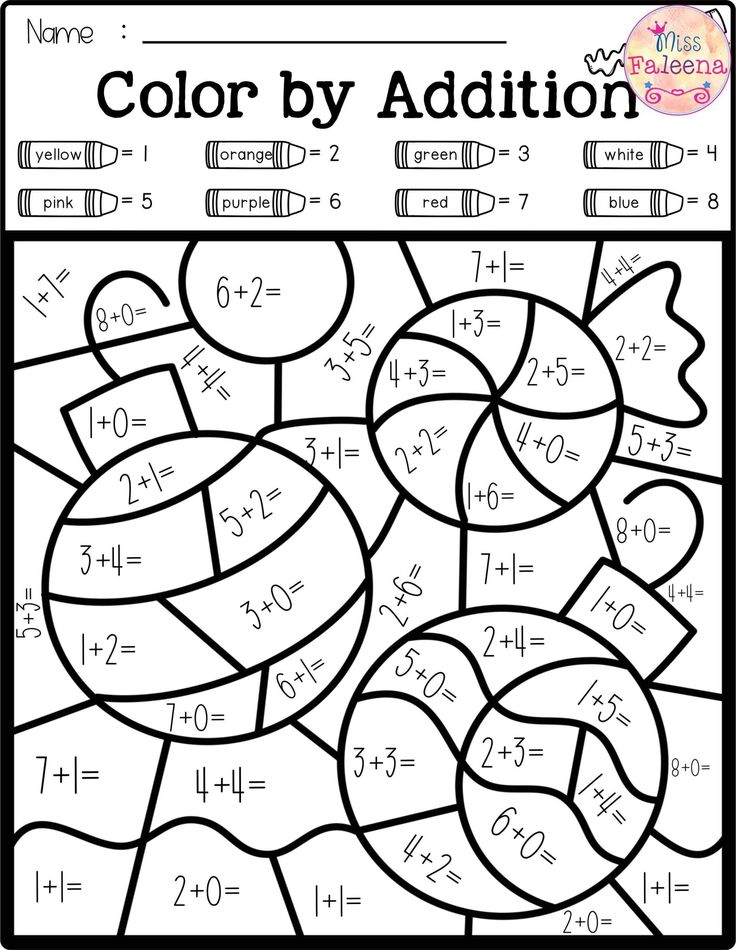 g., two squares make a rectangle).
g., two squares make a rectangle).
Lesson 2: Plane and Solid Shapes –
2 ActivitiesRecognize two- and three-dimensional shapes from various perspectives.
Lesson 3: Perimeter and Area –
2 ActivitiesCompare perimeter and area of two-dimensional shapes in terms of less than, equal to, or greater than.
Lesson 4: Shapes Around Us –
2 ActivitiesRecognize geometric shapes in the environment.
Lesson 5: Pattern Blocks –
2 ActivitiesUse pattern blocks to form shapes. Identify combined shapes in nature, art, and architecture.
Chapter Test: Spatial Sense
Chapter 11: “Time”
Lesson 1: Calendar –
2 ActivitiesIdentify the names of the week and months of the year using a calendar.
Lesson 2: Passage of Time –
2 ActivitiesIdentify the keywords that name the passage of time such as yesterday, afternoon, night, and day.
Lesson 3: Tools for Telling Time –
2 ActivitiesIdentify tools for measuring time such as clocks and calendars and name parts of each tool.
Lesson 4: Time to the Hour and Half-hour –
2 ActivitiesTell time on analog and digital clocks to hour and half hour, and relate time events using shorter/longer.
Lesson 5: Time to the Hour and Half-hour –
2 ActivitiesTell time on analog and digital clocks to hour and half hour, and relate time events using shorter/longer.
Lesson 6: Elapsed Time –
2 ActivitiesSolve simple real-world problems involving elapsed time to the hour and half hour and minutes.
Chapter Test: Time
Chapter 12: “Length”
Lesson 1: Non-standard Units –
2 ActivitiesUse nonstandard units to estimate and measure lengths.
Lesson 2: Compare Lengths –
2 ActivitiesCompare the length of two or more objects by using direct comparison or by using nonstandard units.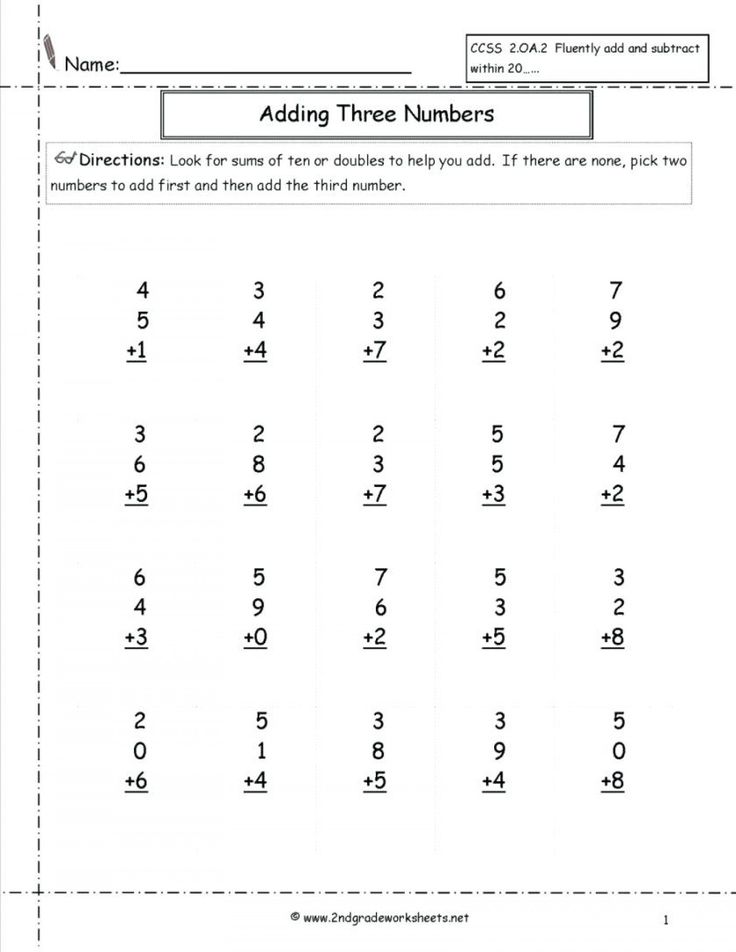
Lesson 3: Customary Units –
2 ActivitiesUse customary units to measure, compare, and order objects according to lengths, in inches and feet.
Lesson 4: Tools and Units –
2 ActivitiesChoose the appropriate unit and tool to measure length.
Lesson 5: Metric Units –
2 ActivitiesUse metric units to measure, compare, and order objects according to lengths.
Chapter Test: Length
Chapter 13: “Weight”
Lesson 1: Non-standard Units –
2 ActivitiesUse nonstandard units to estimate and measure weights.
Lesson 2: Compare Weights –
2 ActivitiesCompare the weight of two or more objects by using direct comparison or by using nonstandard units.
Lesson 3: Customary Units –
3 ActivitiesCompare the weight of two or more objects using customary units and identify the tools for measuring weight.
Lesson 4: Metric Units –
2 ActivitiesUse metric units to measure, compare, and order objects according to weights.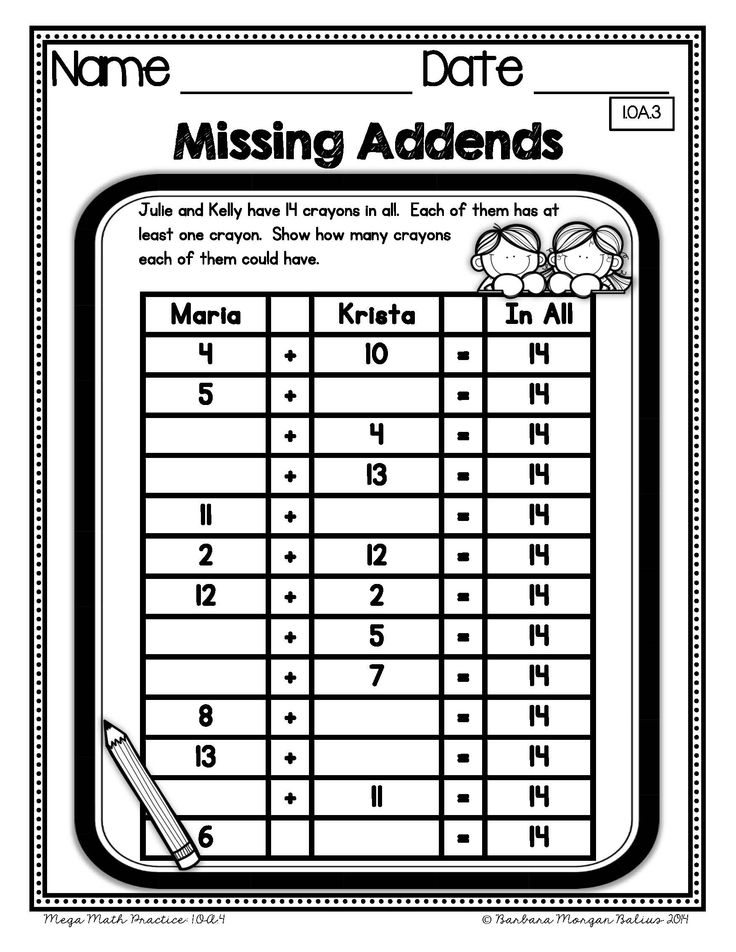
Chapter Test: Weight
Chapter 14: “Capacity”
Lesson 1: Non-standard Units –
2 ActivitiesUse nonstandard units to estimate and measure capacity.
Lesson 2: Compare Capacity –
2 ActivitiesCompare the capacity of two or more containers using direct comparison.
Lesson 3: Customary Units –
2 ActivitiesCompare the capacity (in cups, pints, and quarts) of two or more containers. Identify the tools for measuring capacity.
Lesson 4: Metric Units –
2 ActivitiesUse metric units to measure, compare, and order objects according to capacity.
Chapter Test: Capacity
Chapter 15: “Temperature”
Lesson 1: Measure Temperature –
2 ActivitiesUsing a Fahrenheit thermometer, tell temperature to the nearest 10 degrees. Match temperature in degrees Fahrenheit to the feeling outside of a warm or cold day.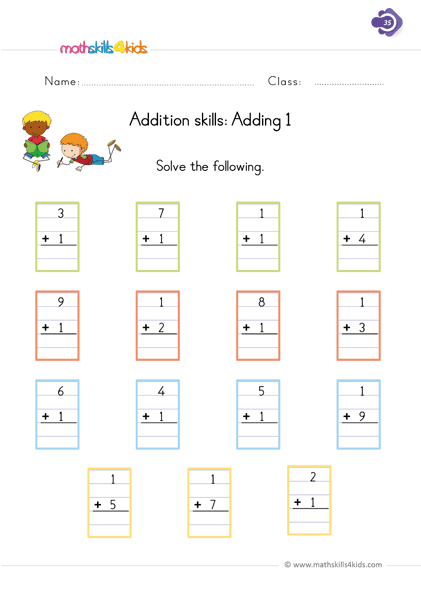
Lesson 2: Compare Temperature –
2 ActivitiesCompare temperatures in degrees Fahrenheit of two or more objects. Identify tools for measuring temperature.
Chapter Test: Temperature
Chapter 16: “Graphing”
Lesson 1: Tally Table –
2 ActivitiesSort objects into categories and create a tally table.
Lesson 2: Pictographs –
2 ActivitiesOrganize and record data in pictographs.
Lesson 3: Bar Graphs –
2 ActivitiesOrganize and record data in bar graphs.
Chapter Test: Graphing
Chapter 17: “Using Data”
Lesson 1: Compare Data –
2 ActivitiesInterpret data and explore range and mode in simple graphs.
Lesson 2: Make Predictions –
2 ActivitiesUse data to make predictions about events or situations.
Chapter Test: Using Data
Chapter 18: “Probability”
Lesson 1: Certain or Impossible –
2 ActivitiesIdentify whether an event is certain, possible, or impossible.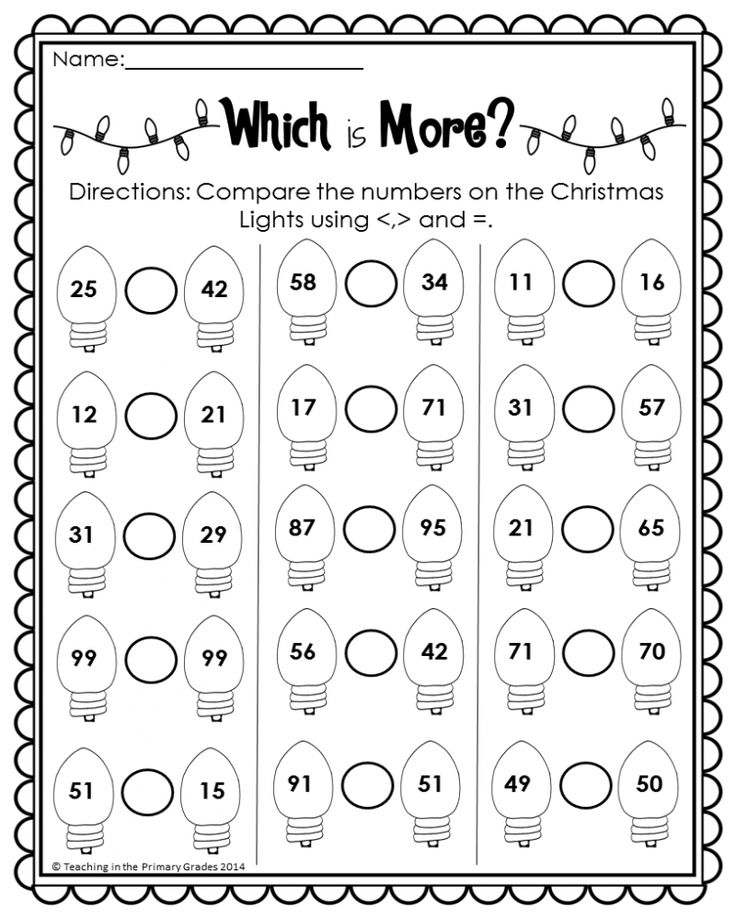
Lesson 2: Most and Least Likely –
2 ActivitiesIdentify the likelihood of a given event.
Chapter Test: Probability
Why Choose Time4Learning First Grade Math Homeschool Curriculum
Without a thorough understanding of foundational math skills, students will find it difficult to keep up with a first grade math curriculum. As we all know, in order to keep a young child engaged and to instill a lifelong love of learning they need to enjoy the lessons.
Time4Learning makes learning fun for first graders through interactive, multimedia-based lessons that feature colorful animations, funny characters, and catchy songs — all of which help children learn, retain information, and have fun. With a simple-to-follow format that builds on previous material, students are able to expand their knowledge and build their first grade math fluency in order to master concepts in number sense, addition, subtraction, estimation, money, patterns, and more.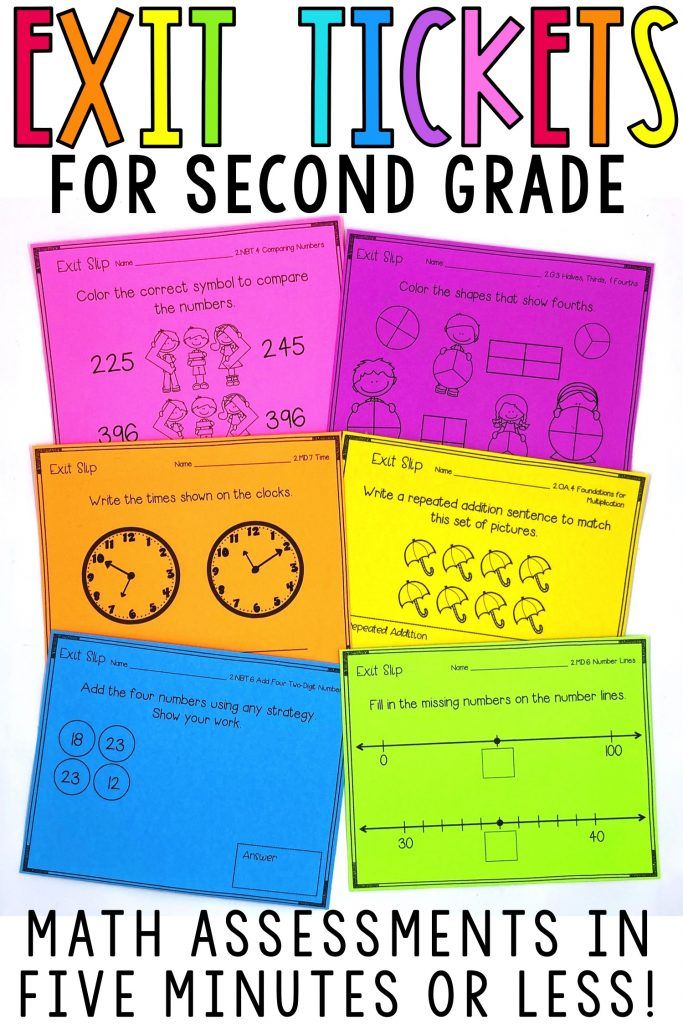
In addition to providing an award-winning curriculum for students, Time4Learning can help your student achieve all their first grade math goals and objectives with our flexible, student-paced curriculum. It also offers convenient tools for parents that help you save time and homeschool with confidence. Learn more about our online first grade homeschool curriculum, designed to help your child learn and master their fundamental concepts.
1st Grade Math Skills, What Your Child Will Learn, Komodo Math
- Math Tips
- Education
- 1st
Your child is heading to first grade! After the year in kindergarten, your first grader will be ready for some amazing growth. For many children, first grade is the year that they bloom as readers and mathematicians. Get ready to support your child’s mathematical growth by learning about first grade math skills.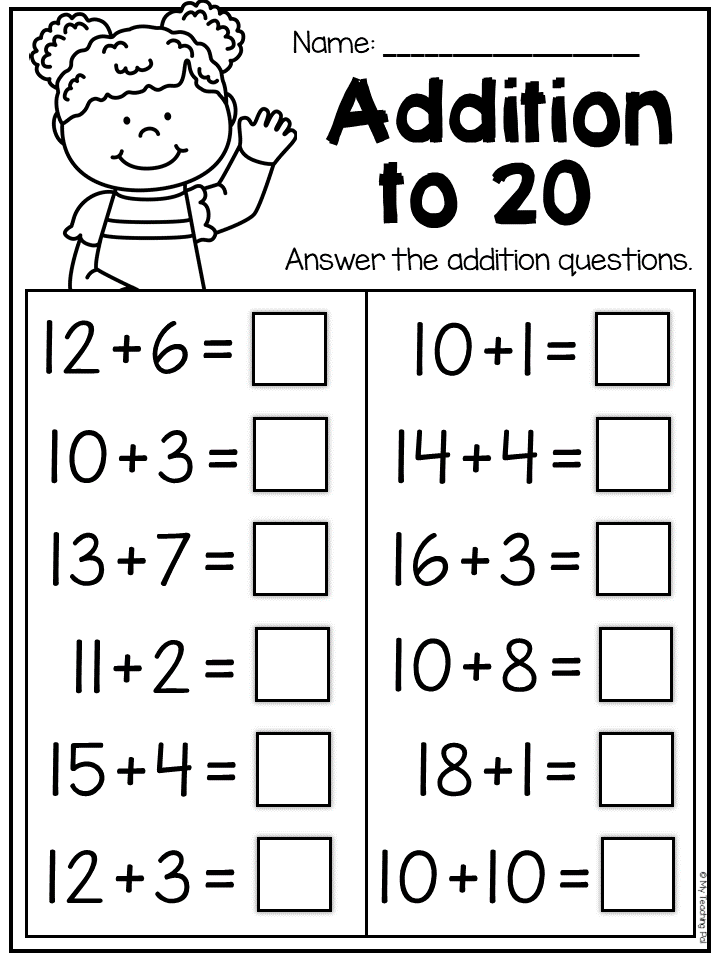
In first grade, you can expect your child to learn about:
1. Addition and subtraction facts to 20
Now that your child has mastered the idea of adding and subtracting, they’re ready to practice math facts. This means getting faster when answering addition and subtraction problems to 20.
Help your child develop fluency by asking basic addition and subtraction problems - we find that using treats can help keep kids interested! If your first grader needs support, encourage the use of physical objects or fingers as problem-solving tools.
2. Addition and subtraction as inverse operations
Your child probably understands the concept of addition as “putting together” and subtraction as “taking apart.” In first grade, children are encouraged to see the connections between addition and subtraction. Your child will learn how addition and subtraction are inverse operations, or that one is the opposite of the other, and create “fact families” of related addition and subtraction problems.
When working with addition and subtraction, ask your child to see connections. For example, if your child has four dolls and three cars, ask how many toys there are in all. Then ask how many toys there would be if the four dolls are taken away.
3. Count and write within 120
Your child has probably mastered counting to 20. But in first grade kids will learn to count all the way up to 120! That’s not all. Kids will be expected to not only count, but write, the numbers. This is great practice for understanding multi-digit numbers.
At home: Encourage your child to write numbers whenever possible. Talk about how two-digit numbers are made up of tens and ones and how three-digit numbers are made up of hundreds, tens, and ones. Just looking closely at multi-digit numbers together can be a great learning opportunity.
4. Add within 100
Now that your child has an understanding of numbers past 100 as well as basic addition and subtraction facts, it’s time to practice adding within 100.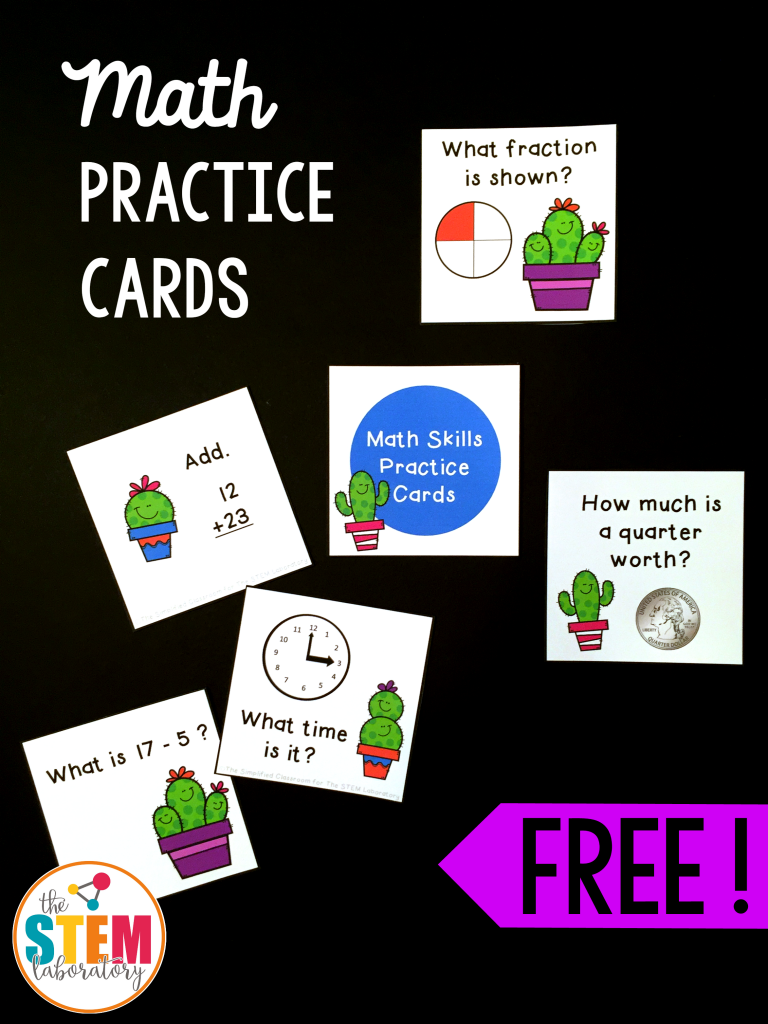 Children will practice adding one-digit numbers to two-digit numbers using strategies like counting on and number charts. Children can practice adding larger numbers with the help of a 1-100 chart.
Children will practice adding one-digit numbers to two-digit numbers using strategies like counting on and number charts. Children can practice adding larger numbers with the help of a 1-100 chart.
First graders are also ready to practice adding and subtracting 10s to and from two digit numbers.
At home: Help your child see patterns when adding and subtracting 10s. For example, after solving a problem like 59 - 10 = 49, point out to your child that 49 has one less 10 than 59. This is another great way to learn about place value.
5. Measure objects
In first grade, kids learn how to measure using rulers and more unusual things like paper clips. After taking measurements, children compare and order objects by length.
At home: Kids love measuring things around the house, so keep a couple of rulers handy.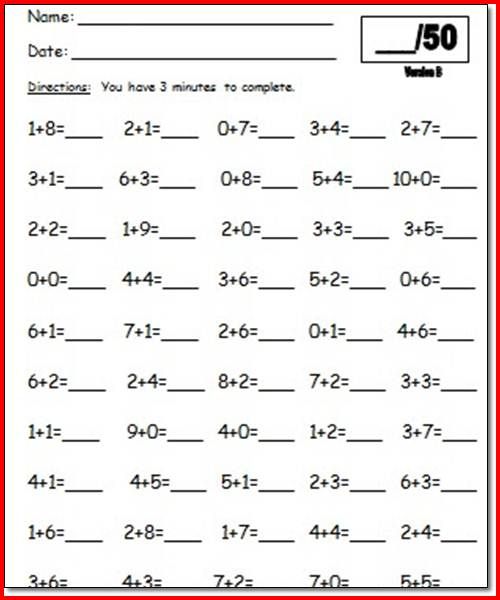 Pay attention to how your child is using a ruler and taking measurements. Sometimes kids don’t quite measure from end to end, so they might need a bit of help...
Pay attention to how your child is using a ruler and taking measurements. Sometimes kids don’t quite measure from end to end, so they might need a bit of help...
6. Tell time to hour and half hour
One of the trickiest concepts first graders will learn is to tell time. Using analog clocks is confusing, especially when kids are more used to seeing digital clocks. In first grade, your child will learn about the big and little hands of a clock and will practice telling time to the hour and half hour.
At home: Get hold of an analog clock for your home (either a real one or one made just for learning). Talk with your child about the time and how the hands move around the clock. Remember to just focus on telling time to the hour and half hour to start!
7. Understand basic fractions
First graders also get an introduction to fractions as equal shares. They will learn how to divide into equal groups and learn basic fractions like ½, ⅓, and ¼.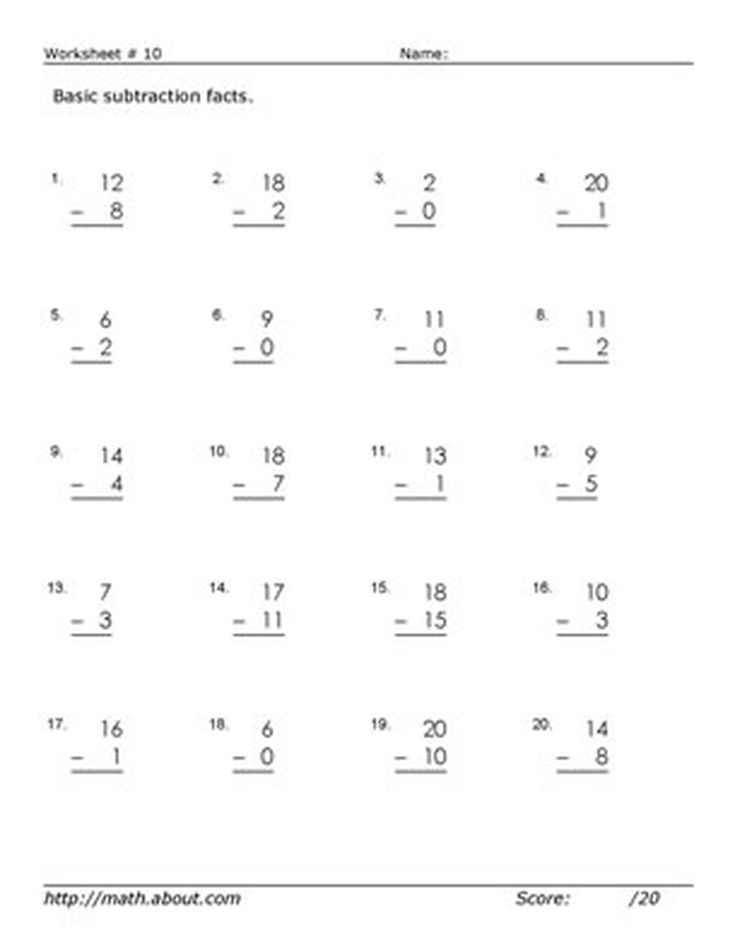 First graders usually have a good understanding of fairness, so practicing making equal shares should be a relatively easy task for them!
First graders usually have a good understanding of fairness, so practicing making equal shares should be a relatively easy task for them!
At home: Help your child to divide pizzas, pies, and sandwiches into equal shares. As you do, talk about the fractions of the whole that you created.
First graders are ready to dive deep into mathematical concepts. Find time to connect with your child about classroom learning and get ready to have some fun!
Found this useful? Check out our grade by grade math guides from Kindergarten to 5th grade
Written by Lily Jones, Lily loves all things learning. She has been a kindergarten & first grade teacher, instructional coach, curriculum developer, and teacher trainer. She loves to look at the world with curiosity and inspire people of all ages to love learning. She lives in California with her husband, two kids, and a little dog.
About Komodo – Komodo is a fun and effective way to boost K-5 math skills. Designed for 5 to 11-year-olds to use in the home, Komodo uses a little and often approach to learning math (15 minutes, three to five times per week) that fits into the busy family routine. Komodo helps users develop fluency and confidence in math – without keeping them at the screen for long.
Designed for 5 to 11-year-olds to use in the home, Komodo uses a little and often approach to learning math (15 minutes, three to five times per week) that fits into the busy family routine. Komodo helps users develop fluency and confidence in math – without keeping them at the screen for long.
Find out more about Komodo and how it helps thousands of children each year do better at maths – you can even try Komodo for free.
Back to School - 5 Tips to Help you Ease Back into the Routine
Here are some steps you can take to ease children back from full vacation mode so that the first week of school doesn't knock you sideways.
Mindset - The Path to Mastery
People who have a growth mindset believe that they always have the potential to learn and improve. They are more motivated to persevere with difficult tasks, to take risks and to learn from failure.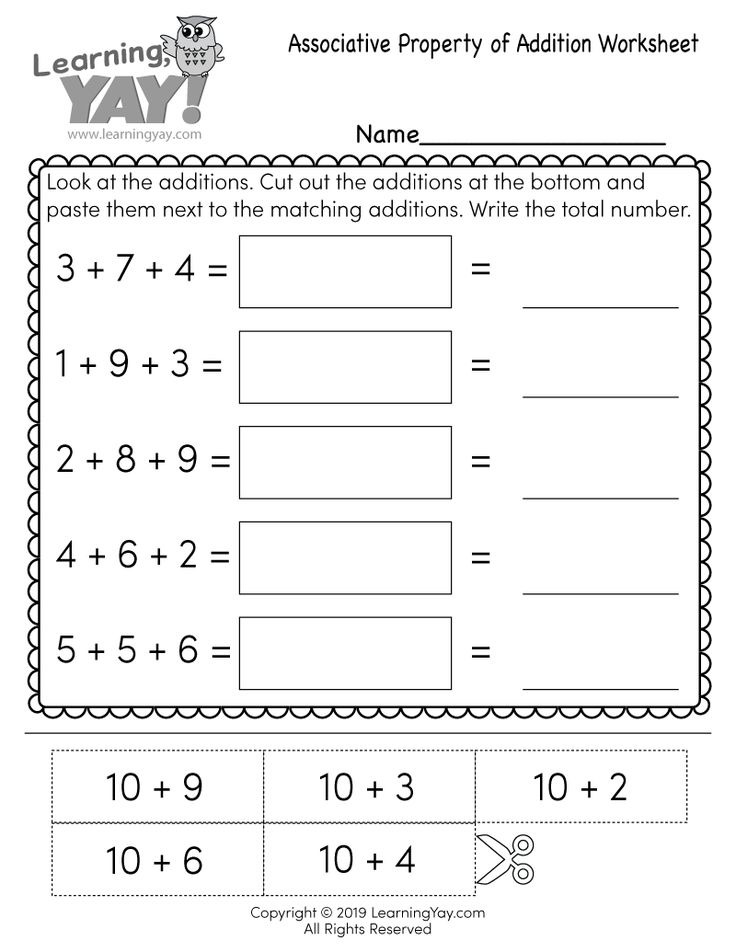
11 Skills Today's First Graders Lack
Preparatory courses where a child is taught to read, write and count do not guarantee that a first grader is fully prepared for school. Our blogger, teacher Olga Kataeva, conducted her research and talks about the results.
Many parents will disagree with me now, because they send their children to development centers so that they can go to school reading, counting to 1000, solving simple problems, writing letters and numbers. What else do you need? Parents believe that such preparation will greatly help the child in the first years of education. It’s not bad, of course, that a first-grader in the first weeks will prove himself in reading, writing and mathematics at a good level, and then what? I do not support such a training program. nine0003
I have worked with a “good set” (prestigious school, motivated parents, prepared children). I will make a reservation that I work in a small town in the Urals, where there are about 30,000 inhabitants, and I write only about my own many years of experience. So, I am diagnosing the readiness of these children for school in order to adjust the program, and I get the results: 16% of the children showed a level above the average, 28% - a low level, the rest - an average level of readiness for school.
So, I am diagnosing the readiness of these children for school in order to adjust the program, and I get the results: 16% of the children showed a level above the average, 28% - a low level, the rest - an average level of readiness for school.
Not a single person with a high level of school readiness. I remember being surprised by this information. Most of the children read and counted. Only 4 people out of 25 could not read (and it turned out that these children had problems in speech development). The lessons passed in one breath. Everyone understands everything, they are actively working. It was like this for one quarter, and then the results of the diagnostics were confirmed: as they began to work with the texts of tasks, write words, sentences, the children “sat down”. It became clear that the entire first quarter of the work was in vain. The children "traveled" on familiar material without overcoming difficulties, and important skills simply were not formed at the proper level. nine0003
nine0003
We have to admit that children come to school unprepared, which manifests itself:
- in the underdevelopment of fine motor skills;
- in unformed mathematical representations;
- in unformed speech;
- in unformed communication skills;
- in the underdevelopment of imagination and fantasy;
- in the underdevelopment of the emotional-volitional sphere;
- inability to play.
The following sets of first-graders (more prepared and less prepared - different, in general) confirmed the conclusion made: children come to school unprepared. For example, what skills are missing.
1. Ability to listen to the teacher
Pedagogical observations of first-graders show that more than 70% of students do not know how to listen to the teacher (not lectures, but elementary instructions for completing a task or explaining how to write a letter). And this is one of the most important skills: reading and oral work on the text, writing a letter, writing a letter - everything is built on it.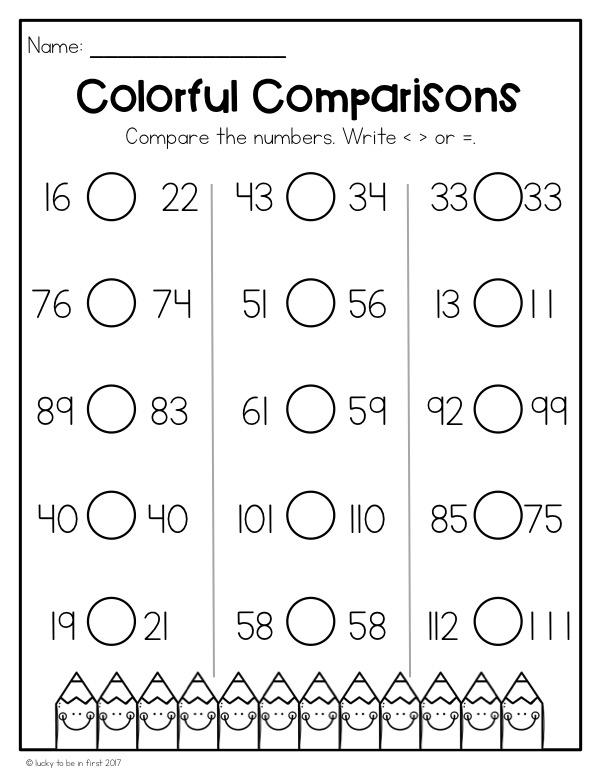 This is also confirmed by the fact that more than 48% of people do not succeed in graphic dictation. nine0003
This is also confirmed by the fact that more than 48% of people do not succeed in graphic dictation. nine0003
2. Ability to hold a pen (including the development of fine motor skills)
About 40% of children cannot hold a pencil, brush and pen. Approximately 28% of students hold the pen incorrectly throughout the entire further learning process. With all this, only 12% of students show a good graphic skill (line quality). For the rest, they are uneven, trembling, with weak pressure. If the ability to cut is diagnosed, then only 16% of children show a sufficient level.
3. Spatial and structural violations
This indicator is off scale: 90% of children come to school with these disorders. Therefore, the process of learning how to make notes in notebooks, work in a line, on a sheet (ISO) - everything goes with great difficulties.
4. Ability to determine the number of sounds in a word
At the beginning of training, 52% of students cannot determine the number of sounds in a word.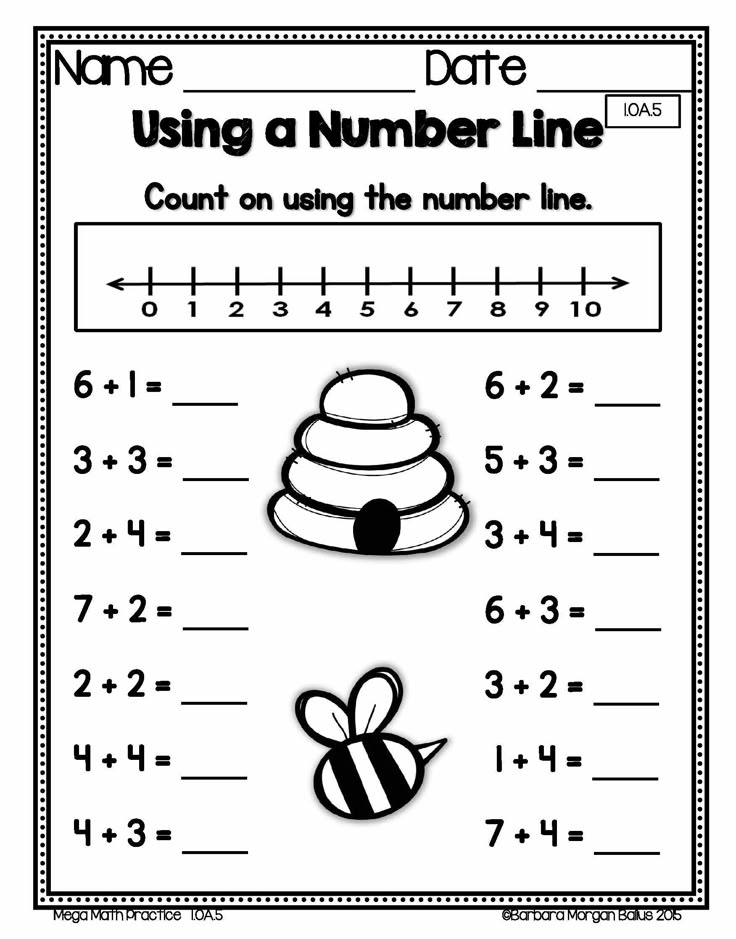 By the end of the first month of training, this percentage decreases to 36%, but remains in 24% of children. At the end of the year, the same percentage of children show difficulties in writing dictations. nine0003
By the end of the first month of training, this percentage decreases to 36%, but remains in 24% of children. At the end of the year, the same percentage of children show difficulties in writing dictations. nine0003
5. Understanding the learning task
This skill is directly related to the ability to listen to the teacher. About 60% of students do not understand the learning task, they cannot follow the instructions, because they cannot keep it. With step-by-step instructions, these children do not have time, they go astray, which leads to negative results. Failure tends to reduce motivation. Children do not want to go to school, their eyes do not shine, they are bored in the classroom, it is hard for them - all this leads to stress and maladaptation.
6. Mathematical representations
Children can easily solve simple problems, but 70% of children cannot make up a mathematical story from a picture. For about two months in mathematics, there is preparation for solving problems: working with text, working with numbers, relationships between them, visualization.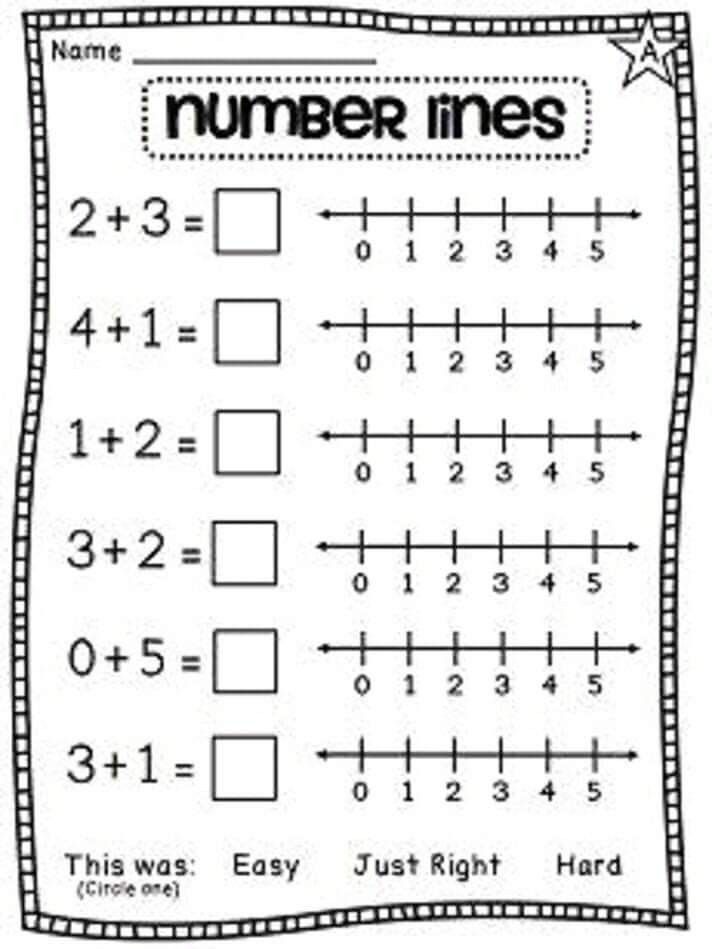 Then we are surprised that children cannot solve more complex problems and, while reading, do not understand the text at all. Children come to school, they count well. At the same time, they do not know the composition of numbers well, they do not see the "volume" of the number, they cannot replace the number with a model.
Then we are surprised that children cannot solve more complex problems and, while reading, do not understand the text at all. Children come to school, they count well. At the same time, they do not know the composition of numbers well, they do not see the "volume" of the number, they cannot replace the number with a model.
7. Ability to play
Surprisingly, 20% of students do not get involved in a game or a game situation in a lesson. At recess, only 20% of students can play a collective game, the rest cannot! Children do not know yard games, they cannot follow the rules of the game, they are offended if the game does not go the way they want, and so on.
8. Empathy
More than 60% of students do not show empathy. They cannot distinguish the intonation in the voice, they do not see the emotional state of the interlocutor/player. The ability to show empathy is necessary, for example, when working with texts on literary reading: understanding the feelings, emotions of the hero, seeing the cause-and-effect relationships of actions, the ability to rejoice, empathize, be sad.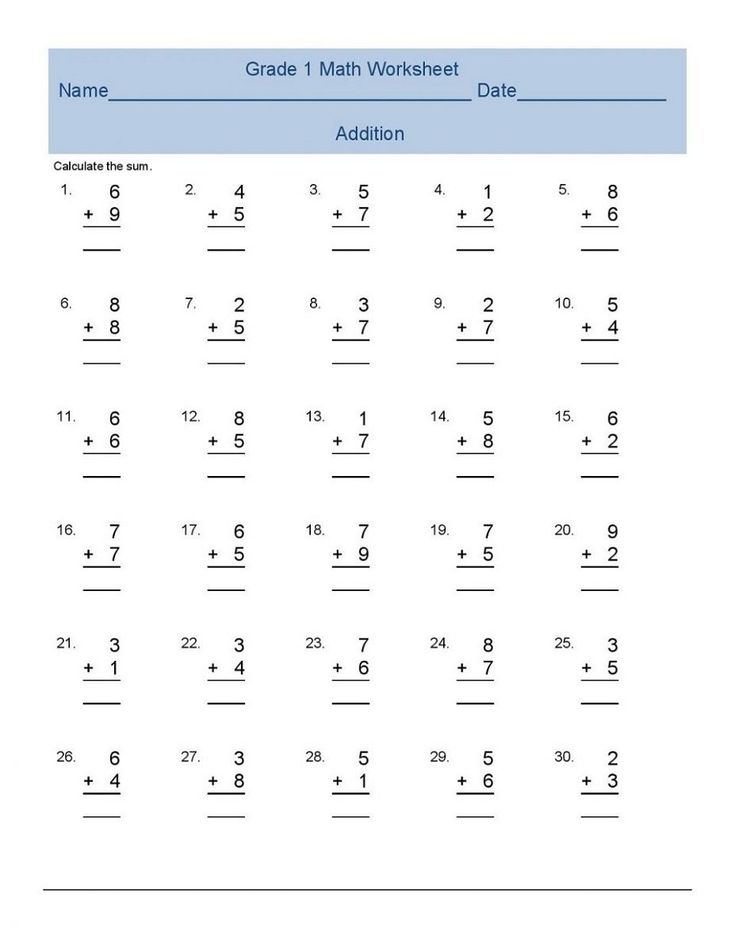 nine0003
nine0003
9. Communication
Observations show that only 40% of children try to avoid conflicts. More than 50% give change to offenders. There are children who provoke conflicts, more than 20% of them turned out to be. Most of the children in the survey indicate that they will not be able to forgive the offender, they will not be able to resist not responding to the insult.
10. Ability to read
80% of students come to the first grade already reading. An analysis of reading errors shows that for the majority this skill is formed incorrectly: children do not understand or distort the meaning of what they read, when reading they "swallow" the middle of a word, do not read the endings of words - guess, confuse some letters when reading, cannot read some letter combinations (sound "s" with the letter "yo"), do not see punctuation marks, read monotonously, make numerous mistakes. nine0003
11. Speech
Now up to 50% of children come with speech impairment of varying degrees.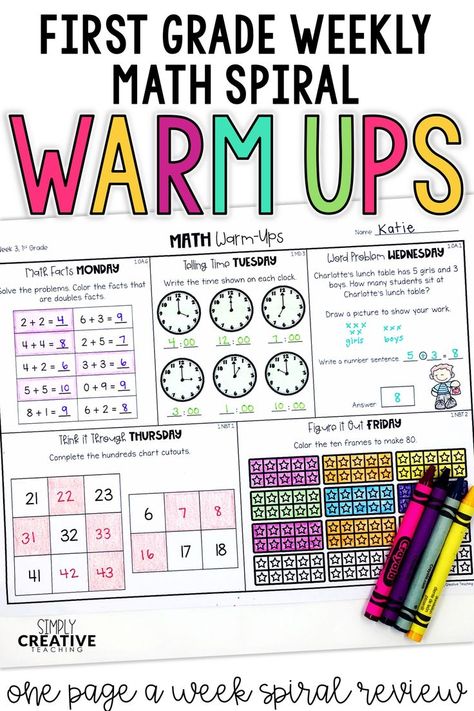 With the ability to read, the vocabulary is not rich and the outlook is not sufficiently developed. Children have difficulty answering quiz questions on fairy tales, they cannot title the text, determine the main idea (in small texts from the alphabet). They do not show curiosity, they will not ask if they do not know the meaning of the word. They cannot express their thoughts, they find it difficult to choose words and other things.
With the ability to read, the vocabulary is not rich and the outlook is not sufficiently developed. Children have difficulty answering quiz questions on fairy tales, they cannot title the text, determine the main idea (in small texts from the alphabet). They do not show curiosity, they will not ask if they do not know the meaning of the word. They cannot express their thoughts, they find it difficult to choose words and other things.
You are in the "Blogs" section. The opinion of the author may not coincide with the position of the editors. nine0076
Mathematics in grade 1 - what should a child be able to do?
Global development does not stand still, so the requirements for a person and his capabilities are constantly increasing. Including such a category of the population as schoolchildren. They need to work almost without rest in order to withstand the competition of their peers.
The level of knowledge of first graders has also become quite high. Schools do not have strict requirements for future students, but still, yesterday's kindergarteners must be prepared for basic subjects. It will be easier for a child to study in the first grade if he knows letters and sounds, can read by syllables, hold a pen correctly, and even better be able to write letters and know the alphabet well. As for mathematics in the first grade, there are also some requirements: you need to know simple geometric shapes, count up to 10, and preferably up to 20, understand what direct and reverse ordinal counting is, navigate on a sheet of paper. nine0003
Schools do not have strict requirements for future students, but still, yesterday's kindergarteners must be prepared for basic subjects. It will be easier for a child to study in the first grade if he knows letters and sounds, can read by syllables, hold a pen correctly, and even better be able to write letters and know the alphabet well. As for mathematics in the first grade, there are also some requirements: you need to know simple geometric shapes, count up to 10, and preferably up to 20, understand what direct and reverse ordinal counting is, navigate on a sheet of paper. nine0003
Both the educational and moral readiness of children is important. Parents are worried about the future first-grader, because even knowing everything that is needed, he can get confused and nervous. And school interviews are held precisely for this, so that teachers can understand how capable and prepared the child is.
How can I help my child learn the school curriculum in mathematics in the first grade?
Many parents from the first grade strive to teach their children to study well - to get only A's.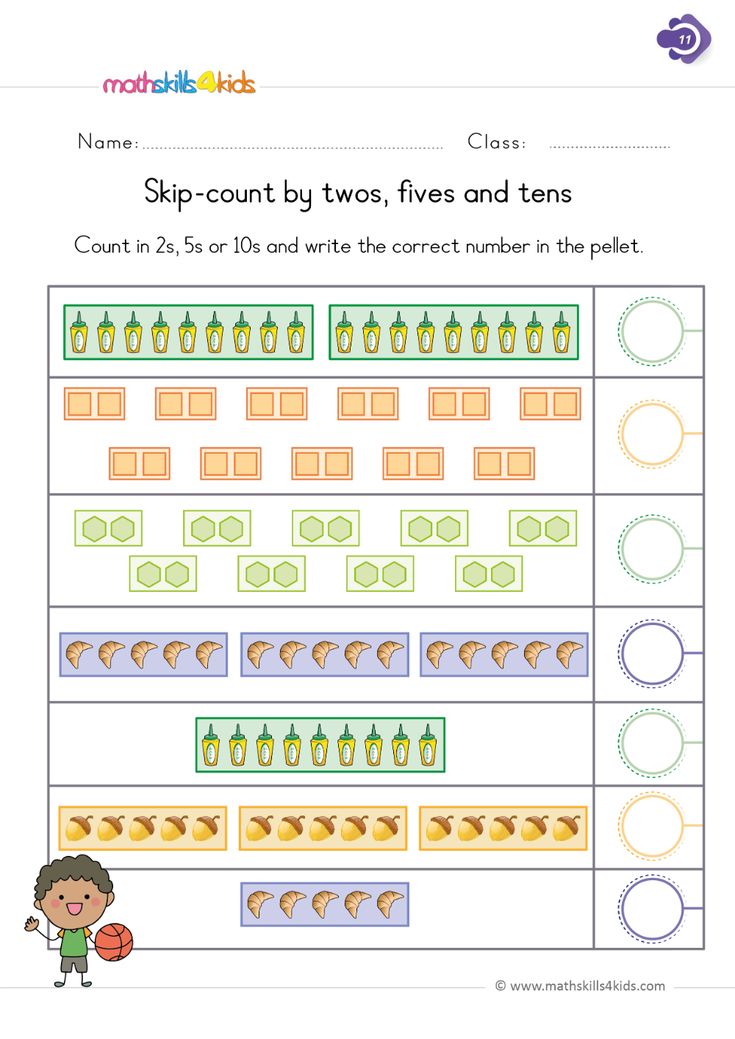 But at the same time, they forget to emphasize that the most important thing is to gain knowledge. Even first-graders often have a problem that the grades are good, but there is very little knowledge. After all, it’s easy to just memorize the material in order to answer well at the blackboard the next day. It is difficult to understand and understand the topic in order to fix it forever. nine0003
But at the same time, they forget to emphasize that the most important thing is to gain knowledge. Even first-graders often have a problem that the grades are good, but there is very little knowledge. After all, it’s easy to just memorize the material in order to answer well at the blackboard the next day. It is difficult to understand and understand the topic in order to fix it forever. nine0003
Therefore, parents should convey to their children that the most important thing is to understand mathematics, learn how to apply it in life, consciously perform exercises, not solve examples in the classroom mechanically, but only with full understanding and without haste. For conscious learning, the development of logic and non-standard critical thinking also helps. Thanks to them, it will be easier for the student to understand mathematics and apply its laws in life.
Mathematics assignments in Grade 1
First-graders' education is mainly based on what children learned in pre-school lessons.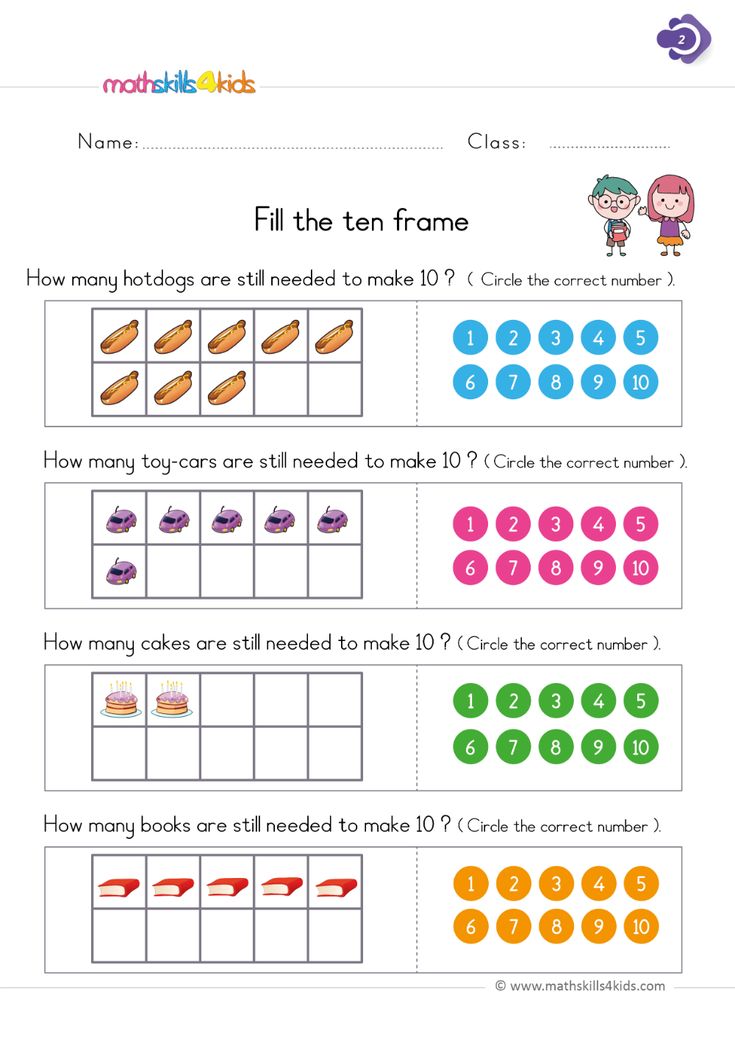 The past is repeated, and the complication of the material occurs very gradually. nine0003
The past is repeated, and the complication of the material occurs very gradually. nine0003
Mathematics assignments in grade 1 are the study of a straight line, a point, a broken line, simple geometric shapes, both written and mental counting. Considering that the basis of algebra is the multiplication table, then in the first grade there is preparation for its study: fundamental knowledge is gained, which in the second grade allows you to master the multiplication table.
In addition, of course, students learn to find figures in the world around them, broaden their horizons, try to apply in life the calculation that they have already mastered. They also solve puzzles, puzzles, easy entertaining tasks, the simplest examples. Despite the fact that this is a school, teachers try to teach the material in an interesting way, and pick up tasks that are exciting and in a playful way. nine0003
Math puzzles and quick wits
In addition to learning numbers, rules and counting, it is important to give your child to solve various puzzles and puzzles.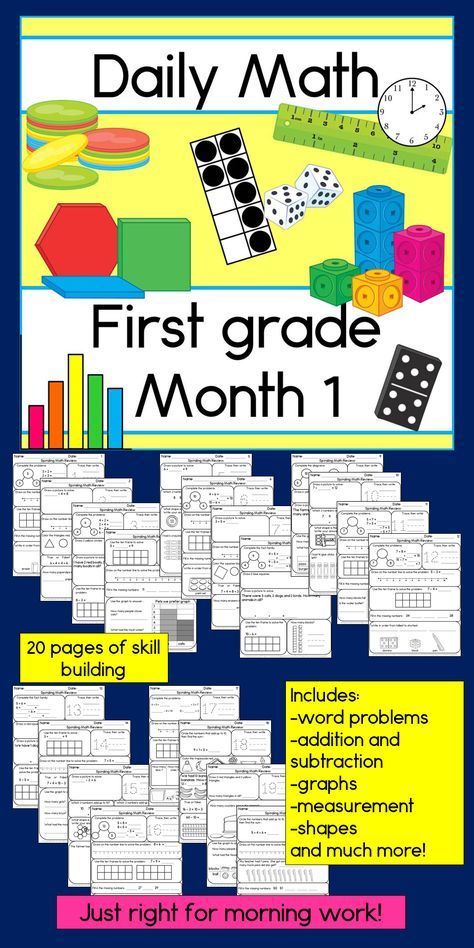 It is non-standard tasks that help a child develop his brain, learn how to find a solution, are not afraid of difficulties, apply mathematical tricks. Simple examples will only help to work out the skill of arithmetic calculations, and you can develop further only using non-standard thinking.
It is non-standard tasks that help a child develop his brain, learn how to find a solution, are not afraid of difficulties, apply mathematical tricks. Simple examples will only help to work out the skill of arithmetic calculations, and you can develop further only using non-standard thinking.
The modern Amamatika method from the AMAKids Intelligence Development Academy includes an online platform and math game simulators that allow you to develop all the abilities of children in the field of mathematics at once.
In order to teach students to easily solve problems of any complexity, as well as apply the “queen of sciences” in life, our textbooks and manuals offer interesting tasks with missing numbers, unbroken crosswords and puzzles, mathematical puzzles for grade 1 and for older children, fascinating mazes , tasks for ingenuity. Knowing how to apply non-standard methods of solving, the child does not experience fear of tasks of increased complexity. He takes on any challenge with interest.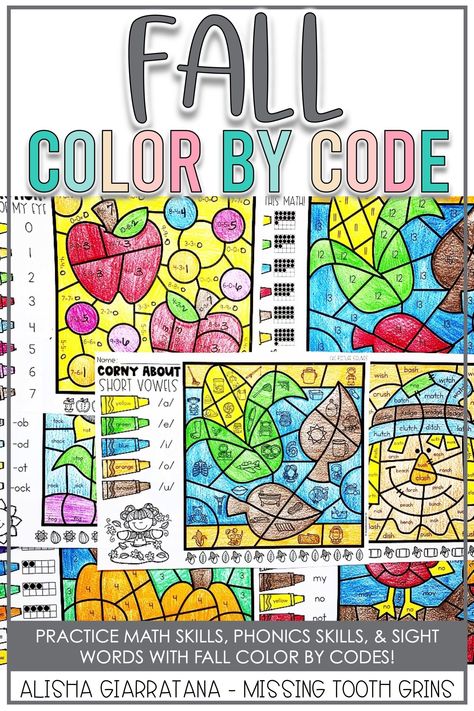 nine0003
nine0003
Mathematics simulator Grade 1
Amamatika platform and simulator will not only help you succeed in school, but also teach you how to find an approach to complex tasks, teach financial literacy and the basics of programming, help develop analytical thinking, spatial imagination. Mathematics is a complex subject, but if you approach learning in a structured way and adhere to a proven methodology, a student will be able to understand and consolidate even the most difficult topics.
On our convenient online platform, students can pull up any mathematical direction - you just need to go to the required section and start doing the exercises. The first grade math simulator will provide a correct understanding of the subject and lay the necessary foundations for further learning.
Also on the gaming platform there are sections with arithmetic, geometry, tasks, as well as tasks on financial literacy, programming and games for the development of logic, memory and attention.